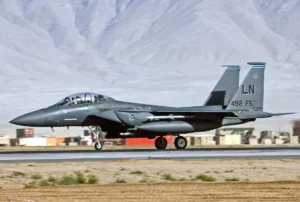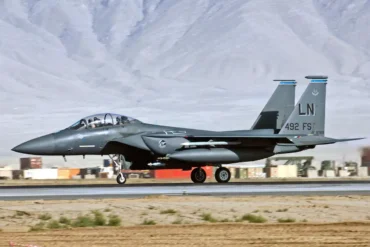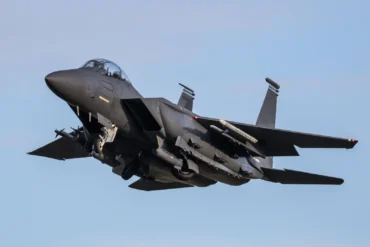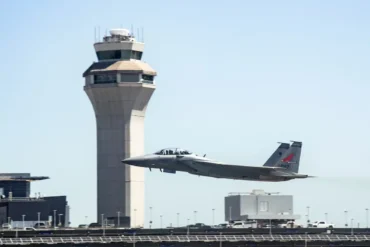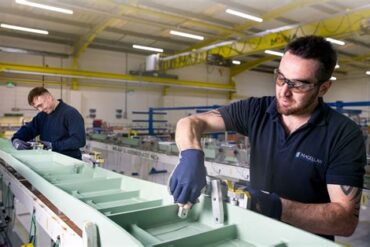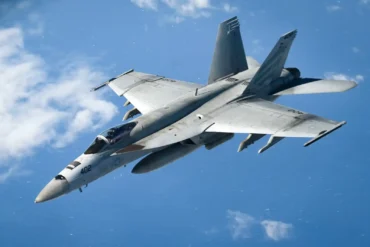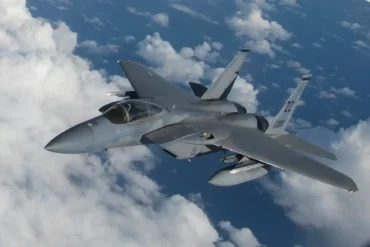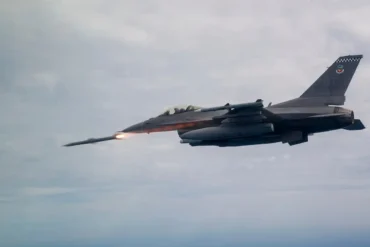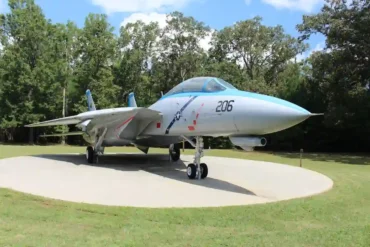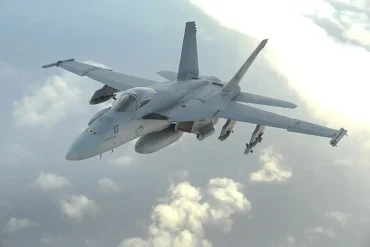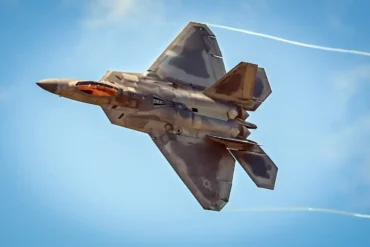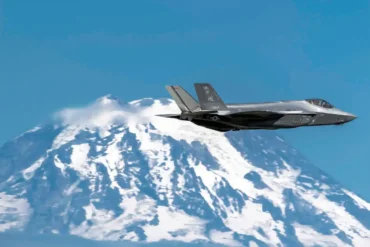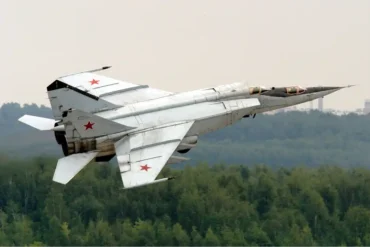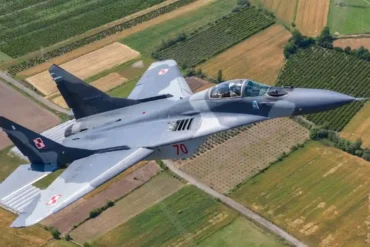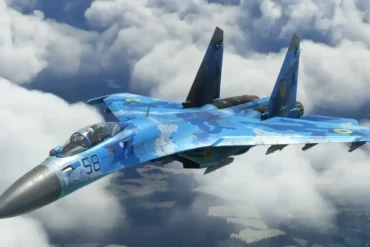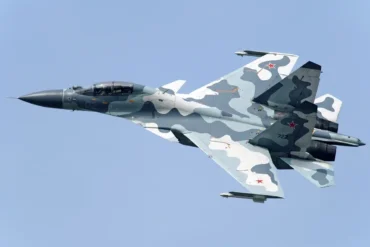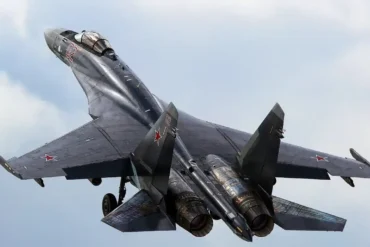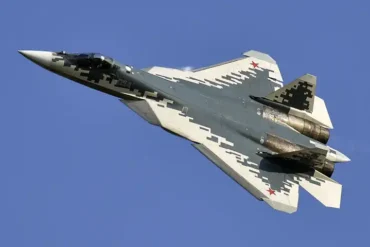The F-15E Strike Eagle is one of the most formidable multi-role fighter aircraft in the U.S. Air Force’s arsenal. Known for its precision strike capabilities, versatility, and high performance, the F-15E is an evolved variant of the renowned F-15 Eagle family. One of the standout aspects of this aircraft is its top speed — a critical factor for both offensive and defensive operations. In this article, we delve into the F-15E Strike Eagle’s top speed, its performance at various altitudes, and how it stacks up against other high-performance jets.
F-15E Strike Eagle’s Top Speed
The F-15E Strike Eagle is capable of reaching impressive speeds that position it among the fastest fighter jets in the world. The top speed of the F-15E is classified under Mach 2.5, equivalent to:
- 1,650 mph (2,655 km/h) at high altitude
- Mach 1.2 (approximately 921 mph or 1,482 km/h) at low altitude
This remarkable speed is achieved thanks to the powerful Pratt & Whitney F100-PW-229 engines that provide the aircraft with an exceptional thrust-to-weight ratio and afterburner capabilities. The Strike Eagle’s maximum speed is just one of many features that highlight its versatility and dominance in aerial combat scenarios.
Key Specifications of the F-15E Strike Eagle
Design and Dimensions
- Length: 63 ft 9.6 in (19.446 m)
- Wingspan: 42 ft 9.6 in (13.045 m)
- Height: 18 ft 6 in (5.64 m)
- Wing Area: 608 sq ft (56.5 m²)
The F-15E is built with a larger, more robust airframe compared to the original F-15C Eagle. This allows it to carry heavier payloads and accommodate additional fuel tanks for longer ranges.
Weight and Power
- Empty Weight: 37,500 lb (17,010 kg)
- Max Takeoff Weight: 81,000 lb (36,741 kg)
- Powerplant: 2 × Pratt & Whitney F100-PW-229 afterburning turbofan engines
These engines, each producing over 29,000 pounds of thrust with afterburner, enable the aircraft to reach speeds far beyond what many other fighters can achieve.
Fuel Capacity
- Internal Fuel: 13,750 lb (6,237 kg) using JP-5 fuel
- With Conformal Fuel Tanks (CFTs): 23,650 lb (10,727 kg)
- With CFTs and 3 External Tanks: 34,162 lb (15,496 kg)
This significant fuel capacity provides the F-15E with an impressive ferry range of 2,100 nautical miles (approximately 3,900 km), allowing it to operate over vast distances without requiring frequent refueling.
Factors Influencing the F-15E’s Top Speed
The F-15E’s top speed is not a static figure—it can vary based on a variety of factors, including:
- Altitude: The F-15E reaches its top speed of Mach 2.5 at higher altitudes where air density is lower, allowing the aircraft to maintain higher speeds with less resistance.
- Aircraft Load: The presence of external fuel tanks, weaponry, or other external payloads will decrease the aircraft’s maximum speed. Clean configurations (without heavy external loads) allow the F-15E to achieve its peak speed.
- Environmental Conditions: Weather conditions, such as wind direction, can also affect the aircraft’s speed during flight.
F-15E Strike Eagle Performance at Different Altitudes
The F-15E’s speed performance is optimized for different flight regimes, which are typically divided into low altitude and high altitude phases.
High Altitude Performance
At high altitudes, where the air is less dense, the F-15E can achieve its maximum speed of Mach 2.5 (1,650 mph or 2,655 km/h). The reduced air resistance allows the aircraft to accelerate to faster speeds while maintaining fuel efficiency, especially during long-range interception or strike missions.
Low Altitude Performance
At lower altitudes, the F-15E operates at a reduced top speed of Mach 1.2 (approximately 921 mph or 1,482 km/h). This reduction in speed is due to the denser air at lower altitudes, which increases drag and limits the aircraft’s ability to maintain supersonic speeds. However, the F-15E still maintains impressive performance and agility at these altitudes, essential for close air support and precision strike missions.
The Role of the F-15E’s Engines in Achieving High Speed
The F-15E Strike Eagle’s engines, namely the Pratt & Whitney F100-PW-229 afterburning turbofans, play a significant role in its ability to achieve such high speeds. These engines are designed for maximum thrust output, ensuring that the aircraft can accelerate quickly to high speeds even under heavy combat loads.
The afterburners on the F-15E allow it to achieve speeds in excess of Mach 2.5, giving it a distinct advantage in air-to-air and air-to-ground operations. This speed capability is critical when the aircraft needs to intercept fast-moving threats, conduct precision strikes, or perform evasive maneuvers during combat.
How the F-15E Compares to Other Fighter Jets
The F-15E Strike Eagle is not alone in its pursuit of high-speed performance. To better understand its capabilities, it is helpful to compare the F-15E to other notable fighter jets.
F-22 Raptor
The F-22 Raptor, another U.S. Air Force fighter, boasts a top speed of Mach 2.25 (approximately 1,500 mph or 2,414 km/h), which is slightly slower than the F-15E. However, the F-22 excels in stealth and aerodynamics, giving it an edge in air superiority missions.
F-16 Fighting Falcon
The F-16 Fighting Falcon has a top speed of around Mach 2.0 (approximately 1,320 mph or 2,124 km/h), which is slower than both the F-15E and the F-22. However, the F-16 is a much smaller and more agile aircraft, designed for multi-role missions.
Eurofighter Typhoon
The Eurofighter Typhoon, a prominent European multi-role fighter, has a top speed of Mach 2.0 (around 1,320 mph or 2,124 km/h). While it matches the F-16 in speed, its performance in air combat is comparable to the F-15E, especially in terms of agility and maneuverability at high speeds.
Sukhoi Su-35
The Sukhoi Su-35, a Russian fighter, has a top speed of around Mach 2.25 (approximately 1,550 mph or 2,500 km/h). While slightly faster than the F-15E, the Su-35’s design prioritizes maneuverability and combat effectiveness over raw speed.
Applications of the F-15E’s Top Speed in Combat
The F-15E’s top speed is crucial for several mission types, including:
Combat Air Patrol (CAP)
During Combat Air Patrol missions, the F-15E may need to patrol vast airspace, intercept enemy aircraft, and respond rapidly to threats. The aircraft’s ability to reach speeds of Mach 2.5 at high altitudes allows it to cover large areas quickly, ensuring effective control of the airspace.
Strike Missions
In precision strike missions, speed plays a role in both interception and bombing. The F-15E’s supersonic capabilities allow it to strike targets and then quickly exit the area, minimizing its exposure to enemy defenses.
Intercepting Enemy Aircraft
The ability to reach high speeds is also crucial for intercepting hostile aircraft that are attempting to penetrate friendly airspace. With its Mach 2.5 speed, the F-15E can close the distance rapidly, ensuring successful interception and neutralization of threats.
Conclusion
The F-15E Strike Eagle is a high-speed, versatile aircraft capable of achieving Mach 2.5 at high altitudes, making it one of the fastest fighter jets in the world. With a top speed of 1,650 mph (2,655 km/h) at high altitudes and 921 mph (1,482 km/h) at low altitudes, the F-15E excels in speed, agility, and combat effectiveness. Whether conducting air-to-air combat, precision strikes, or interception missions, the F-15E’s top speed is an essential asset that enhances its overall performance in diverse operational scenarios.
